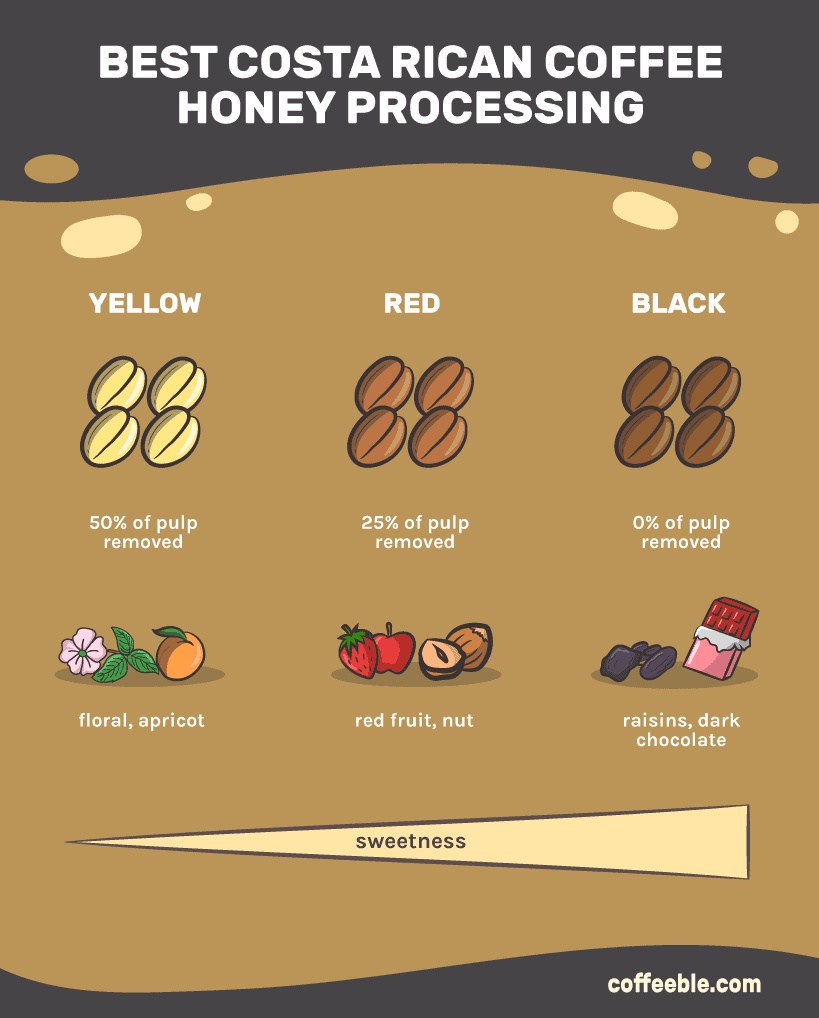Café Britt Costa Rican Origins
There are three different flavor profiles to enjoy.
They’re single-origin, and 100% Arabica beans.
They go direct from the farm to the roaster.
How can I choose the best Costa Rica coffee?
Like any coffee-growing region worldwide, Costa Rica has its terroir and processes that give its beans unique characteristics. Costa Rica is known for some of the highest quality beans. This is partly because they outlawed Robusta’s production in 1988 and now grow Arabica coffee only (1).
But there are still a few things to consider if you want to get your hands on the best coffee.
| product | details | Button | |
|---|---|---|---|
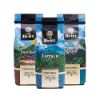
|
Café Britt Costa Rican Origins Coffee Bundle |
|
 SEE ON AMAZON
SEE ON AMAZON
|
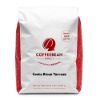
|
Coffee Bean Direct Costa Rican Tarrazu |
|
 SEE ON AMAZON
SEE ON AMAZON
|
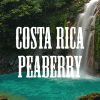
|
Volcanica Costa Rica Peaberry |
|
click to check price |
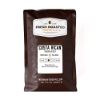
|
Fresh Roasted Costa Rican Coffee Beans |
|
 SEE ON AMAZON
SEE ON AMAZON
|

|
Oren’s Costa Rica La Minita |
|
CLICK TO CHECK PRICE |

|
Peet’s Costa Rica |
|
CLICK TO CHECK PRICE |

- Medium Roast
- Chocolate, grapefruit (Tarrazu); spice, citrus (Tres Rios); earthy (Poas)
- Pour over, drip brewing

- Light Roast
- Lemon, chocolate, honey
- Cold brew

- Medium Roast
- Honey, lemon, almond
- Pour over

- Medium Roast
- Honey, chocolate
- Espresso

- Medium Roast
- Chocolate, fruit, honey
- French press

- Dark Roast
- Smoky notes
- Drip brewing, French press
Growing regions of Costa Rica
Despite being a relatively small nation, Costa Rica has eight different growing regions. It’s perhaps this diversity that sets it apart from other countries.
Diversity provided Costa Rica beans a space on the international coffee scene.
Tarrazu: Located southeast of the capital San Jose, this is perhaps Costa Rica’s best-known region and where 35% of its coffee beans are grown. Tarrazu is on the slopes of the Quepos Mountains in the center of the country. It has an altitude of 3,900 to 5,500 feet. Such elevation is ideal for high-quality coffee production.
We’re privileged by the altitude, the soil, the temperature and the climate.
William Rojas, CoopteDota coffee collective
Coffees produced here have high acidity, with flavors of honey and chocolate.
Western Valley: Even within this single region, flavor profiles can vary from farm to farm. This is due to the different microclimates found in the area. Many of the country’s award-winning beans come from the Western Valley (2).
Expect complex flavors from these coffee beans, with notes of stone fruit, citrus, honey, and vanilla.
Central Valley: This area encompasses land at different altitudes, ranging from 2,900 to 5,200 feet. While the general flavor profile of Central Valley coffee is well-balanced with chocolate and honey notes, factors like intensity and acidity will depend on the altitude at which the beans were grown (3).
Tres Rios: Only 2% of the country’s coffee is grown here, yet it is best known. The soil is rich in ash from the nearby Irazu Volcano that provides an ideal terroir for coffee. Expect a full-bodied coffee with flavors of rich fruit and chocolate. This region has even been referred to as the “Bordeaux of Costa Rica”.
Brunca: Most of the coffee grown in this region is found at lower altitudes, though some specialty coffee is produced on higher farms. Here, the high humidity levels help develop light and subtle flavors, with aromatics including jasmine and orange flower.
Guanacaste, Orosi, Turrialba: Just 5% of Costa Rican coffee comes from these three areas combined, all found at lower altitudes. Turrialban beans have a light smokiness from the ash of the nearby volcano.
Processing methods used in Costa Rica
We usually process coffee beans in one of two ways: natural and washed.
In washed or “wet” processing, all of the fruit flesh is removed from the bean before drying. The resulting coffee is bright and acidic, with the flavors coming from the bean itself. This method is commonly used in other Central American beans like Guatemala coffee.
With the natural or “dry” process, coffee cherries are left in their natural state (with all of their flesh). What follows is the drying process. The flesh adds its taste to the coffee during the process, which develops rich, fruity flavors. The pul is removed after drying.
In the cup, honey-processed coffees tend to be more complex than their washed analogs, but not as fruity as natural coffees.
Trianon Coffee
Producers often produce Costa Rican coffee using a third method: honey processing.
This is like a hybrid between natural and washed coffee. Here, a percentage of the fruit is left on the beans for the fermenting and the drying process. Depending on how much pulp remains, these beans are known as yellow honey, red honey, or black honey. Yellow honey beans have a more aromatic flavor and mild sweetness, while red honey has more fruity flavors, and black honey beans are rich and sweet.
The Best Costa Rican Coffee of 2022
If you’re looking for the brands that best exemplify the unique characteristics of the best Costa Rican coffee, we’ve lined up six of our favorites.
Still, if you’re looking for a quick caffeine fix than whole bean coffee, check out our guide to instant coffees.
1. Café Britt Costa Rican Origins Coffee Bundle – Best Overall
Specifications
Roast: Medium
- Tasting notes: Chocolate, grapefruit, spice, citrus, earthy
- Best for: Pour over, drip brewing
- Region: Tarrazu, Tres Rios, Poas
Café Britt offers the ideal introduction to the world of Costa Rican coffee. And they know a thing or two about it. The company specializes in Costa Rica coffee and has been based there since they set up shop more than 30 years ago.
This 3-pack highlights the variety in flavors from three of the most famous coffee-growing regions. The single-origin beans have all been given a medium roast to balance intensity and bright acidity, making it great for pour over coffee.
With the Tarrazu coffee, you’ll get marked acidity with citrusy grapefruit notes, tempered by the sweetness of chocolate. The Tres Rios coffee has a more elegant profile, with spice and citrus flavors and stone fruit aroma. The Poas-grown whole bean contrasts with the earthy but fruity aroma that this region is known for.
If a three-pack is too much commitment, Café Britt also does single bags of coffees, including medium roast organic beans from the Brunca region of Costa Rica.
2. Coffee Bean Direct Costa Rican Tarrazu – Best Light Roast
Specifications
Roast: Light
- Tasting notes: Lemon, chocolate, honey
- Best for: Cold brew
- Region: Tarrazu
Light roasts on Tarrazu coffee allow the coffee to retain the fresh acidity that the region is famous for. This coffee has a sweet and complex flavor profile, with fruity lemon notes accompanied by milk chocolate and honey.
The result is well-balanced and incredibly smooth. If you like cold brew, this is an excellent way to get the most out of these beans.
Coffee Bean Direct supplies roasted and unroasted beans from some of the world’s most exclusive growing regions. This includes Hawaiian Kona coffee, Kenyan AA beans, and Blue Mountain beans from Jamaica.
The company has remained an online-only business so that they can ship directly to customers. This means the beans are fresher than if they had been sitting in a store first. Coffee Bean Direct roasts to order and hand-packs every bag.
3. Volcanica Costa Rica Peaberry – Best Single Origin
Specifications
Roast: Medium
- Tasting notes: Honey, lemon, almond
- Best for: Pour over
- Region: Tres Rios
These unique beans are harvested from a single estate in the Tres Rios region, known for its mild and sweet coffees. You can find the Aquiares Estate at an altitude of 5,200 feet, where its beans are all shade-grown and Rainforest Alliance Certified.
These rare beans are smaller and denser than regular beans, and fans say they produce a noticeably sweeter and more flavorful coffee (4).
Volcanica’s Costa Rica Peaberry has a flavor profile typical of both the Tres Rios region and this particular bean. The sweetness is demonstrated with the taste of honey, while lemon flavors provide a brightness that offers balance to the cup. You’ll also get hints of nutty almond.
If you want to get the Costa Rica coffee experience without the buzz, Volcanica offers decaffeinated coffee beans from the Tarrazu region.
4. Fresh Roasted Costa Rican Coffee Beans – Budget Pick
Specifications
Roast: Medium
- Tasting notes: Honey, chocolate
- Best for: Espresso
- Region: Tarrazu
Fresh Roasted Coffee offers an affordable option for anyone wanting to experience the unique taste of Tarrazu beans. Their low price doesn’t mean shoddy practices, though. All of the workers on the farms are provided with medical services, insurance, accommodation, and transport during the entire production process.
These coffee beans are full of flavor, but being medium-bodied, they make an excellent choice for espresso. They do have a bright acidity, as is familiar with other Costa Rican coffees, but it’s well balanced by a deep sweetness, featuring tastes of honey and baker’s chocolate.
5. Oren’s Costa Rica La Minita – Best Medium Roast
Specifications
Roast: Medium
- Tasting notes: Chocolate, fruit, honey
- Best for: French press
- Region: Tarrazu
Hacienda La Minita is one of the most famous estates in the Tarrazu growing region and one of the first coffees in the world to be branded single estate (5). The farm uses a meticulous growing and harvesting process, with only the best 18% of the crop getting the La Minita label. Crops produced here are Rainforest Alliance Certified.
Oren’s La Minita coffee is a medium roast that’s bright and full-bodied in the cup. There’s a lingering sweetness with notes of milk chocolate, plums, and honey. Try using these coffee beans for French press coffee to experience all of the subtle tastes.
Oren’s Daily Roast is a small batch roaster dedicated to providing fresh coffee to all its customers. It guarantees that coffee beans are shipped within a day of leaving the roaster.
6. Peet’s Costa Rica – Best Dark Roast
Specifications
Roast: Dark
- Tasting notes: Smoky
- Best for: Drip brewing, French press
- Region: Not specified
Like most darker roasts, Peet’s Costa Rica is low in acid than the other coffees on this list. It still retains some citrusy notes to brighten the flavor profile, which is full-bodied with a hint of smokiness.
Peet’s offers several single-origin coffee varieties from Costa Rica and uses these coffee beans in many of their signature blends. The company sources its Costa Rican coffees predominantly from the Taarrazu, Tres Rios, and Poas.
Peet’s has a Coffee Verification Program that ensures responsible sourcing for all its beans, regardless of the country. In conjunction with Enveritas, they implement changes that will positively affect both farmers and the environment.
The Verdict
Part of the appeal of Costa Rican coffee is the way it differs from region to region. The best way to experience this variety is with the Café Britt Costa Rican Origins pack. With this, you’ll get to know the flavors of Tarrazu, Tres Rios, and Poas.

FAQs
Costa Ricans make their coffee using a chorreador. It consists of a fabric filter hung on a stand, through which is poured the already mixed coffee and hot water. You can even find this method used in some coffee shops (6).
Costa Rican coffee is higher in acid due to the high altitudes at which it is grown (7). And this is generally speaking. If you have a sensitive stomach, you can still enjoy Costa Rican coffee by choosing beans farmed at lower altitudes, such as in the regions of Guanacaste or Turrialba.
Costa Rica has been known for coffee since the 1800s. Although coffee had been grown there since the late 1700s, it was in 1820 that the country began to export the crop to neighboring nations. These days, coffee accounts for more than 10% of the country’s earnings.
- Reini, J. (2018, November). Costa Rica’s 30 Year Ban on Robusta Coffee Trees. Retrieved from https://todaybythenumbers.com/2018/11/costa-ricas-30-year-ban-on-robusta-coffee-trees.html
- Cafe Imports: Costa Rica. (n.d.). Retrieved December 22, 2020, from https://www.cafeimports.com/europe/costa-rica
- Central Valley. (n.d.). Retrieved December 22, 2020, from https://cafedecostarica.com/en/vallecentral
- Meister. (2018, August 09). What Makes Peaberry Coffee So Special? Retrieved from https://drinks.seriouseats.com/2011/01/wont-you-be-my-peaberry-what-are-peaberry-coffee-beans.html
- Hacienda La Minita. (2019, August 12). Retrieved from https://www.laminita.com/farms-mills/hacienda-la-minita
- Valencia, A. (2020, November 06). Exploring The Costa Rican Chorreador. Retrieved from https://perfectdailygrind.com/2020/10/exploring-the-costa-rican-chorreador/
- Vassau, M. (2019, September 17). Costa Rican Coffee: Get To Know Your Coffee Origins. Retrieved from https://www.drivencoffee.com/blog/costa-rican-coffee-origins/

